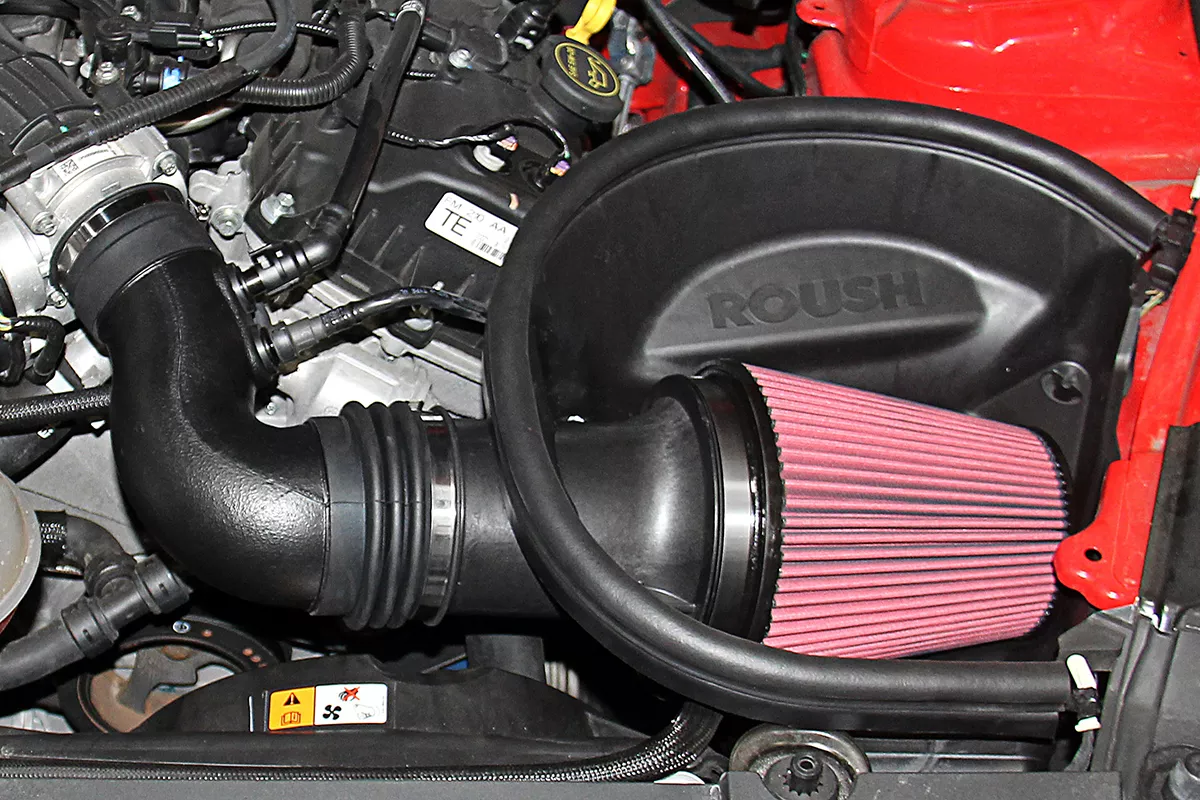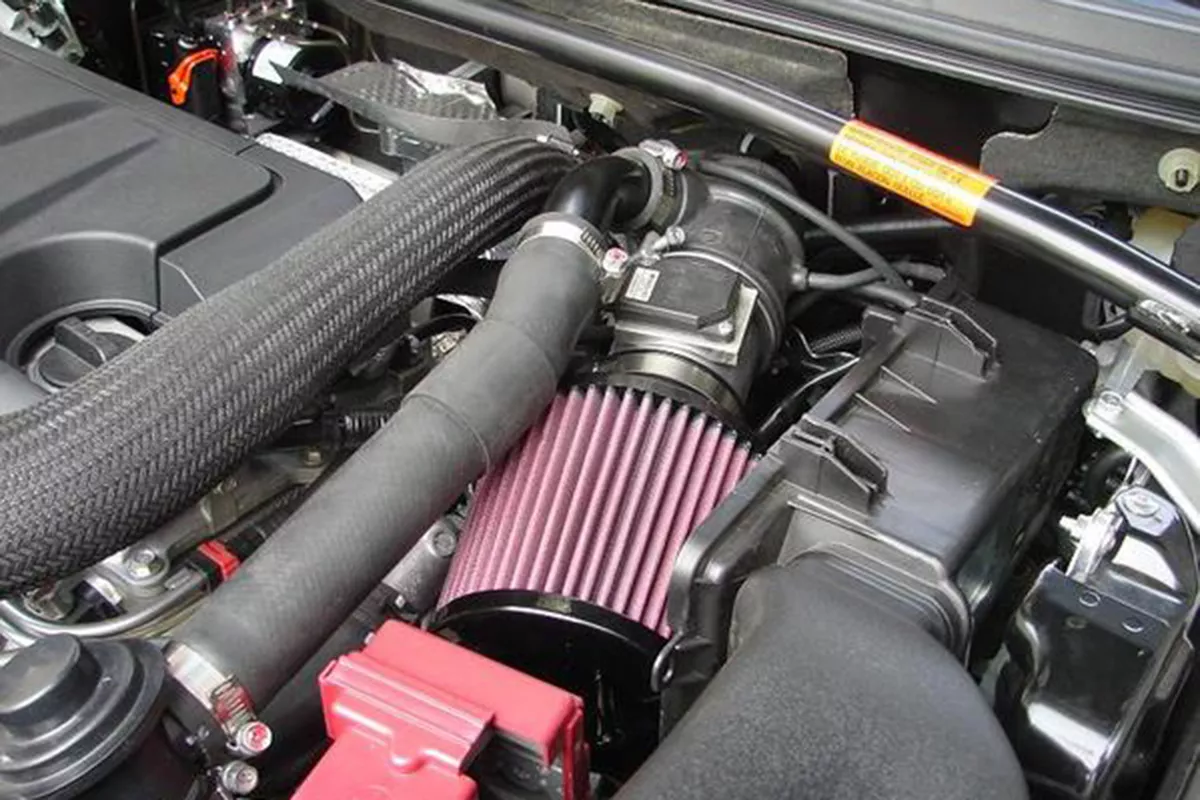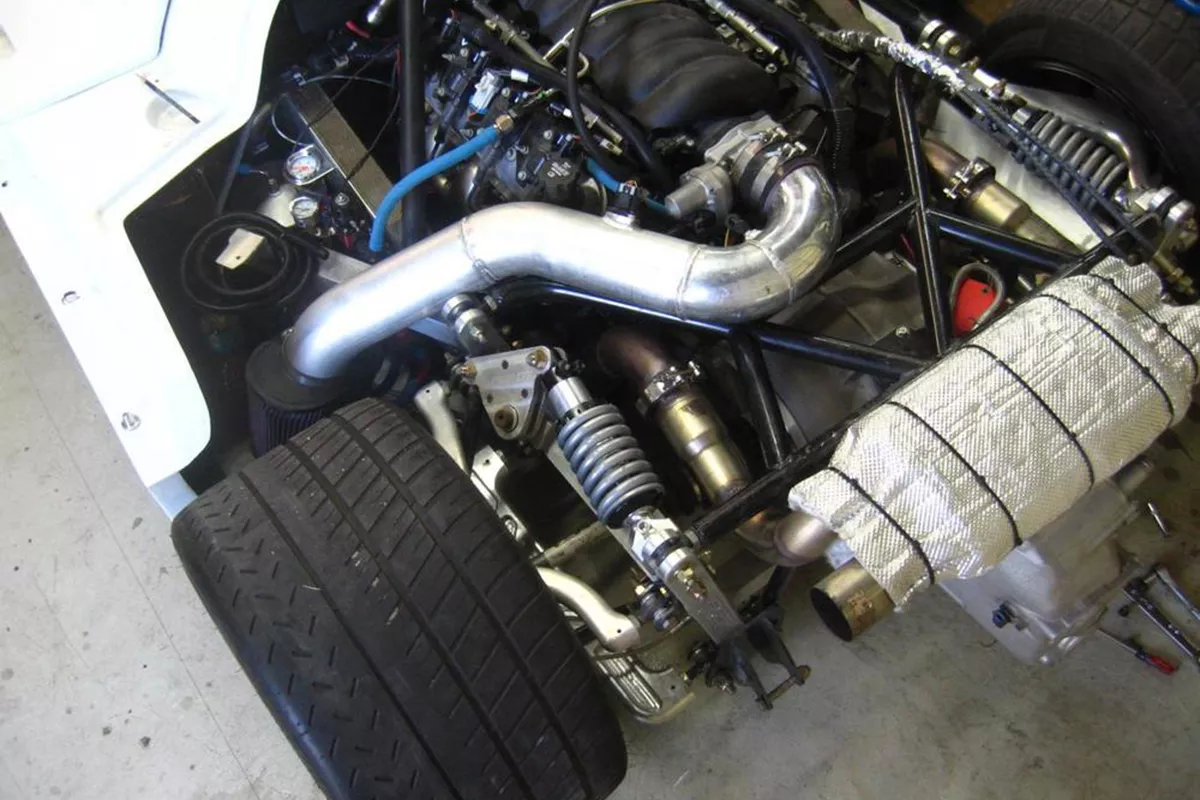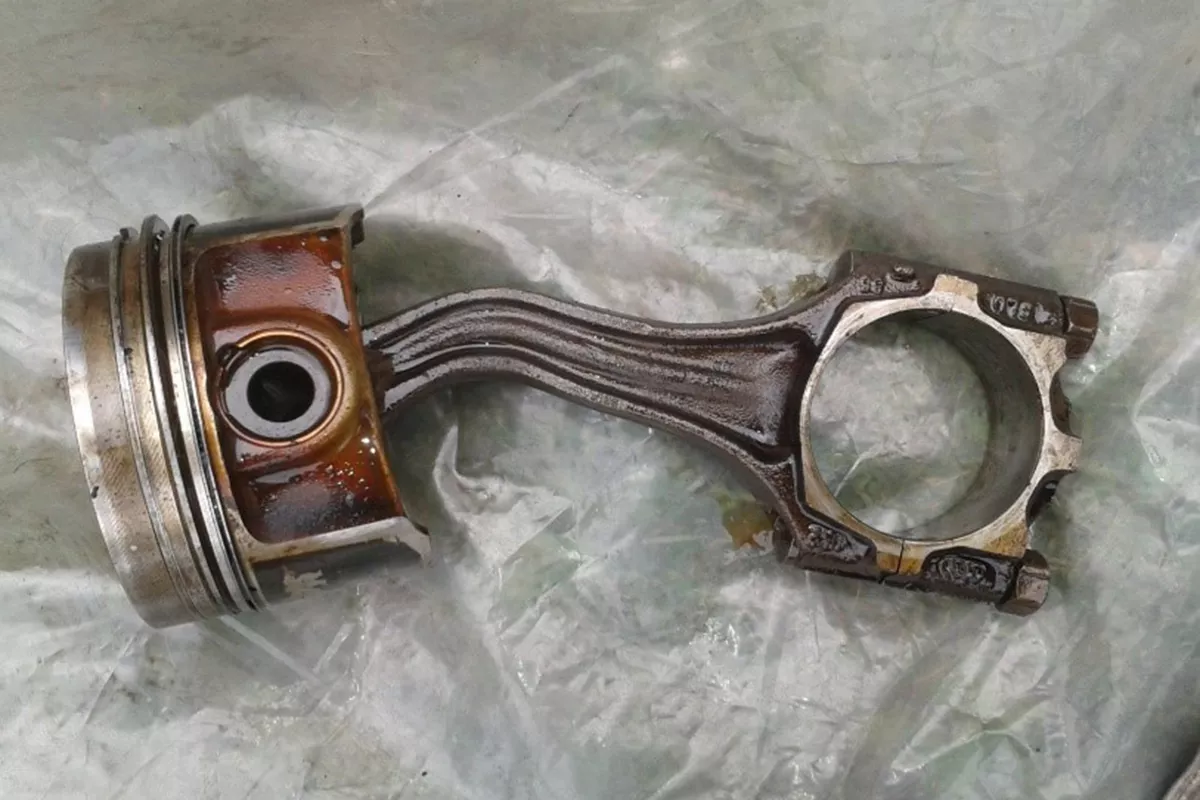Cars need air. As we’ve said in our article talking about naturally aspirated engines, the more air an engine gets, the more efficient the fuel combustion process becomes. It might also mean that the said engine can produce more power and torque.
That said, there are a number of engine mods other than turbochargers/superchargers that involve air. This includes tinkering with the air intake system by replacing the stock one with arguably better aftermarket air intake systems.

A V6 Mustang with a cold air intake
There are however, two popular types of these intake systems. There are cold air intakes and short ram intakes. So, just how different are these two from each other? To find out, let’s define what these are first.
What is a cold air intake?
An aftermarket cold air intake is usually positioned away from the engine and usually behind a heat shield. This way, it can provide colder, denser oxygen-rich air to the engine for better fuel combustion – at least on paper.
Apart from the position of installation, typical aftermarket cold air intakes also come with larger, less restrictive filters, as well as a wider pipe.
![A K&N branded cold air intake systen [Photo: K&N] A picture of a KandN cold air intake](https://img.philkotse.com/temp/2024/07/27/kandn-cai-1-242c-145e.webp)
A K&N branded cold air intake systen [Photo: K&N]
So, does installing a cold air intake mean more horsepower?
Well, it depends on the engine. What’s consistent, however, is that cold air intakes will result in more engine noise. According to K&N, adding their cold air intake can provide 4 to 5 horsepower, but that’s not much.
To take advantage of an aftermarket cold intake system, one needs to introduce more modifications. This includes re-tuning the car’s engine control unit (ECU), and/or installing a turbocharger.
>>> Related: OEM vs Aftermarket car parts: All you should know about its Pros & Cons
What is a short ram intake?
The main difference between short ram intake and cold air intake is a short ram intake supposedly increases power by making airflow less restricted while cold air intakes are positioned away from the engine as we mentioned. That’s it. It doesn’t get repositioned anywhere, but it does eliminate the need for a resonator, as well as introducing a less restrictive air filter.

A short ram air intake
By being in the engine bay, a short ram intake will take in warm air. As mentioned, warm air is less dense than cold air, and it contains less oxygen.
>>> Related: What is a stroker engine?
Cold air intake vs short ram intake: Which is better?
According to a test done by CarThrottle, it is best to keep your engine bone-stock if you’re planning to use your car as a daily driver. This is because stock air intakes will simply perform better at low RPMs. And when we’re talking about low RPMs, we’re talking about your typical commute on Philippine traffic.
In the case of short ram intakes, the power your engine can provide will decrease as the engine gets hotter. The upside to this is that it’s significantly cheaper than a cold air intake system. It’s also easier to install since the pipe is shorter, and short ram intakes do not use a heat shield.

An example of a cold air intake system positioned outside the engine bay
>>> Related: What does naturally-aspirated mean? Pros and Cons?
For cold air intakes, many consider this to be the best for performance. It doesn’t have the warm air weakness of the short ram intake, and it performs well in higher rpms.
Do note though that some cold air intake setups require it to be positioned low on the car, close to the ground. As such, there’s a chance that water can enter through the intake, thus causing engine hydrolock.

A damaged connecting rod due to hydrolock
For those who are unaware, a hydro locked engine means that a volume of liquid enters the cylinder. Since water isn’t as compressible as air, the piston immediately stops. This stoppage can cause connecting rods to bend or crack, bearing damage, or even fractured cranks or heads.
Cold air intake vs short ram intake: FAQs
1. Question: Which is cheaper? Cold intake or short ram intakes?
Answer: Short ram intakes are cheaper to purchase since it doesn’t need to be repositioned.
2. Question: How do I maximize my horsepower gains when using a cold air intake?
Answer: Re-tune the car’s engine control unit.
3. Question: How much does a cold air intake system cost in the Philippines?
Answer: A complete cold air intake system will run somewhere from Php 15,000 to Php 30,000 depending on the brand of the intake. Different intake kits of different car models will also have pricing variances.
4. Question: Will forced induction perform better with a cold air intake?
Answer: Yes. As we’ve said, cold air is denser and contains more oxygen. Therefore, a turbocharger working in combination with a cold air intake won’t need to work as hard.
5. Question: How do I install a cold air or short ram intake?
Answer: For this, we recommend consulting a professional mechanic. Also, these products will typically come with their own manuals. Consult those as well.
For more automotive news and car maintenance tips, keep reading here on Philkotse.com.
Recent posts
- Watch out! Illegal car modifications to avoid in the Philippines! Oct 07, 2020
- What's a Cabin Air Filter and When Should you Replace it? Aug 16, 2022
- 6 common kinds of car air filter & how to choose the best one Feb 23, 2021
- Replacing car air filter: Must-have skills that every Filipino driver needs to know Feb 23, 2021
- 7 components to tune up car engine for maximum horsepower & torque Dec 15, 2020












